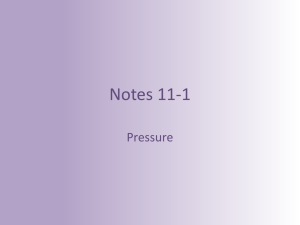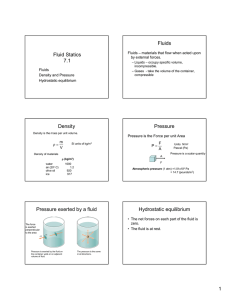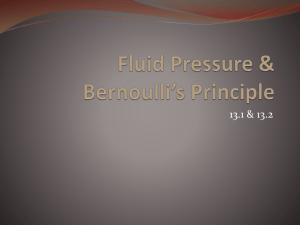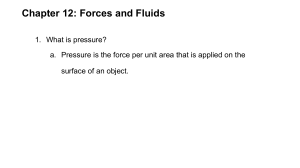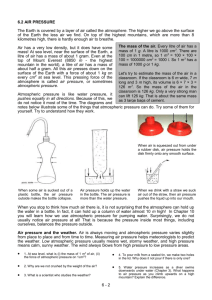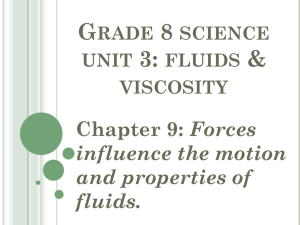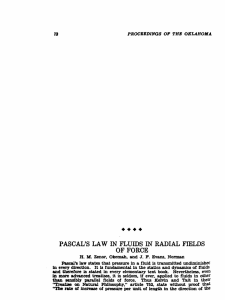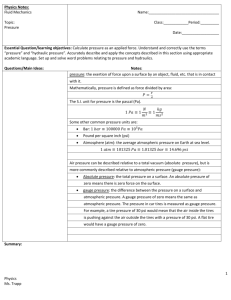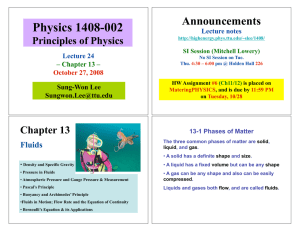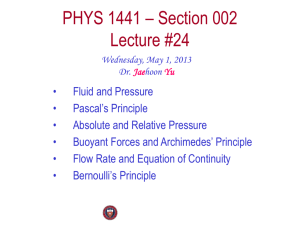Pressure
advertisement
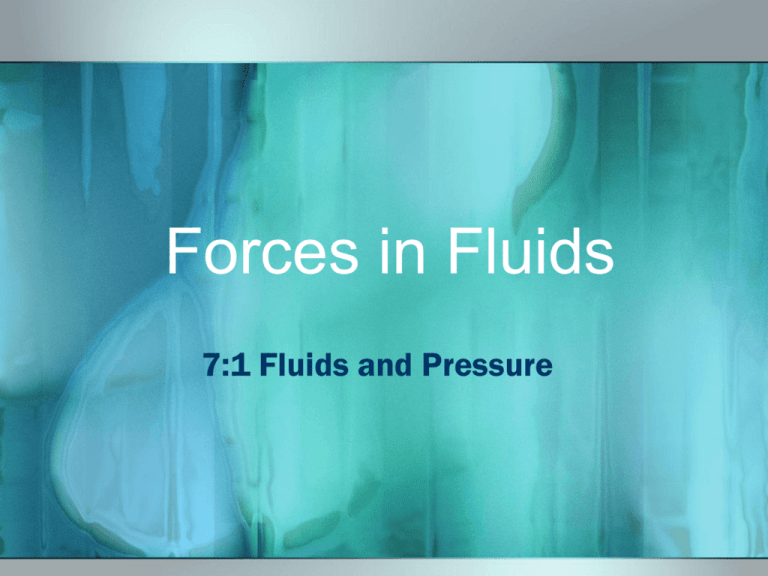
Forces in Fluids 7:1 Fluids and Pressure Terms Fluid~ any material that can flow and takes the shape of its container Pressure~the amount of force exerted on a given area Pascal~SI unit for pressure Atmospheric pressure~ pressure cause by the weight of the atmosphere Density~the amount of matter in a certain volume Pascal’s Principle~ A change in pressure at any point in an enclosed fluid will be transmitted equally to all parts of that fluid All Fluids Exert Pressure •Pressure = Force ÷ Area •1 N/m2=1 pascal •Force of the air particles hitting the inner surface of the tire creates pressure •Why are bubbles round? –fluids exert pressure evenly in all directions –bubble expands in every direction –helps to create a sphere Atmospheric Pressure • Atmospheric pressure is exerted on everything on Earth • Exerts approx. 101,300 N on every square meter or (10 N per square centimeter) • The fluids inside your body exert pressure which works against atmospheric pressure • Atmospheric pressure varies – Low at the top of atmosphere because there is very little atmosphere to press down Atmospheric Pressure (cont.’d) • Pressure depends on depth – Pressure decreases as you go higher into the atmosphere – Fluids in your body must adjust as you go between higher and lower points •Ears “popping” •Air behind eardrum expanding or contracting •“pop” due to air being released Water Pressure • Water pressure increases as depth increases • Pressure depends on the depth of the fluid not the total amount of fluid present • Density makes a difference – Water is more dense then air – Water has a greater mass for a certain volume – Waters exerts more pressure than air Fluids Flow from High Pressure to Low Pressure •When drinking through a straw, you remove air from inside the straw •Pressure inside the straw is reduced •Atmospheric pressure on surface of liquid remains the same •Pressure outside the straw is higher pressure then inside the straw so the liquid is pushed up the straw PASCAL’S PRINCIPLE Chapter 11 Section 3 Lets Review… What is pressure? What is the equation for pressure? What causes fluid pressure? When you catch a deep-sea fish, why does its eyes pop-out? Why do your ears pop on an airplane or up in the mountains? Pascal’s Principle When force is applied to a confined liquid, the change in pressure is transmitted equally to all parts of the fluid. Draw a bottle of water with arrows to illustrate the regular exerted pressure. Then draw a water bottle that you squeeze. What happens to the pressure? What happens if you open the top? How does Pascal’s Principle explain what happens if you squeeze a water bottle? A force applied to one section of an enclosed liquid at rest will be transferred to the entire liquid with the same amount of force. Hydraulic Systems A force applied to one piston increases the fluid pressure throughout the fluid. If the second piston has a larger surface area, the force is multiplied! Pressure = Force/Area Force/Area = Pressure = Larger Force/Larger Area
